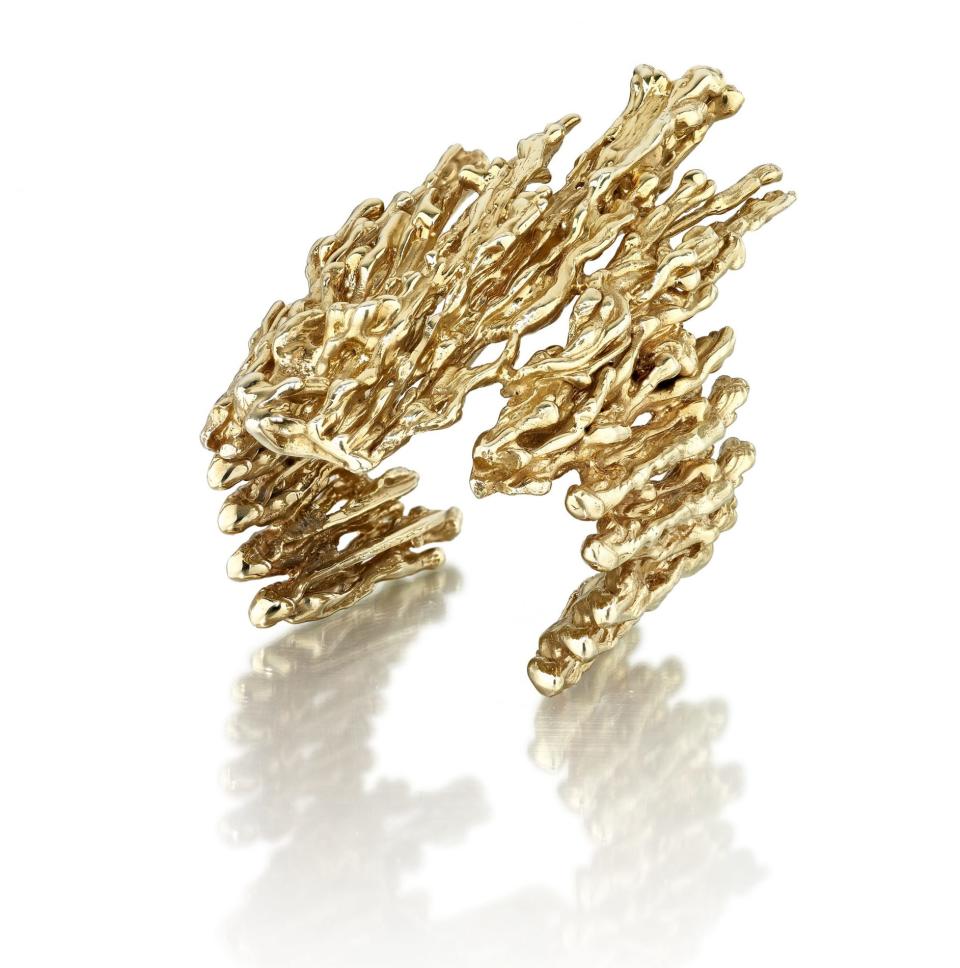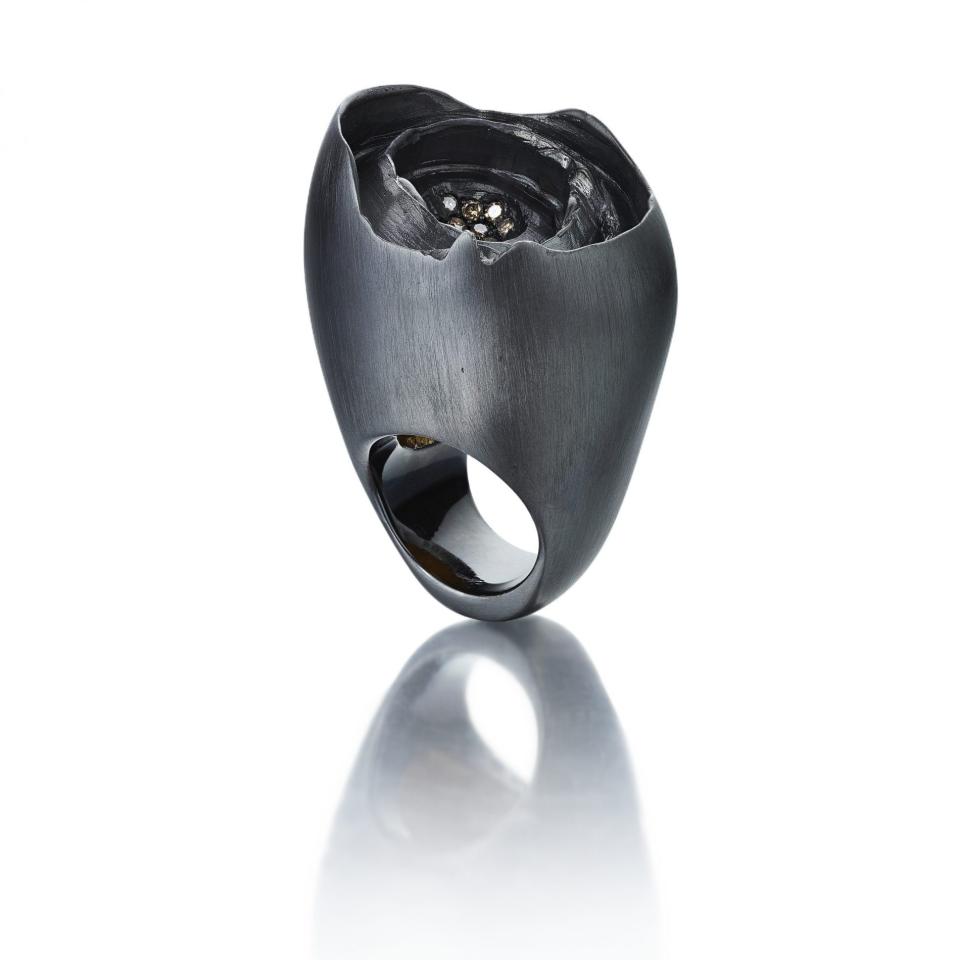Emefa Cole on Aligning Design Ethos With Origin of Source Materials

For the London-based Ghanaian jewelry designer Emefa Cole, traceability of raw materials is as important as the concept and techniques behind her Africa- and nature-inspired pieces.
“In my opinion, it’s vital for my work to include traceability of the source of the materials. When you read up about jewelry, whether it’s what’s happening now or in the past, the story is mainly always about the designer. So many people who are a part of the making actually get forgotten about. But for me, without the miners of the gold or silver or gemstones, and the people who cut the gemstones, I can’t really create,” said the designer from her home in Hammersmith in West London.
More from WWD
Cole said she started using single-mine origin because she believes that it comes with much more substance compared to the usual sustainable option, recycled gold.
“There’s a direct link to the mines and the people who actually mined the metal, and also how me buying the gold can help them to develop in their lives as well. It’s very much woven into my work now. And with the customers, because they’re essentially buying a piece of me. And so it’s my values and how I respect the materials and the people who produce them that they’re buying into. So it’s a complete package,” she added.
Now whenever a customer buys a piece of Cole’s jewelry made with single-mine origin gold, it comes with a little card that has a QR code on it, which carries all the information that’s available on that particular source of gold.

Courtesy
A concept created by the Birmingham, England-based AIM-listed gold company Hummingbird Resources, single-mine origin gold is sourced from one of the Hummingbird Resources’ mines in Mali, from which Cole sources for her jewelry, as well as a mine in Côte d’Ivoire, controlled by Endeavour Mining.
“When you are buying pieces made from single-mine origin gold, you’re really supporting the whole communities. You know that there are ethical practices in these mines. It’s adults mining. With other sources of gold, it could be kids. It’s that whole sort of just making sure that you are doing the best you can in supporting people to be able to educate their children so their children don’t have to go and work on the farms or in the mines.”
As for gemstones, Cole said she purchases directly from two sources in Africa, one in Nigeria and one in Kenya.
“These two cutters actually go to the mines and they buy the rough. And then we have a video call and they show me the rough and then they will cut it for me into whatever shape is possible. Unless it’s a specific project. I don’t mind what comes out of it because I like that element of surprise,” Cole said.
She acknowledges that pushing traceability in the jewelry industry still has a long way to go, as it can be easily exploited as a trendy thing to do for some.
“In an ideal world, it would be nice if we were all on the same page. I understand that’s not possible. People can exploit that, but for me, it’s not about trends. It’s about what I actually value as a person. The storytelling is fantastic. Because it sells the piece. It’s the inspiration behind it, but you can make that richer by being more conscious about where your materials are from. I think that tells an even more beautiful story,” she said.

Courtesy
The designer draws inspiration from powerful movements in nature, such as erosion and volcano eruptions. One of her sculptural rings from the Vulcan series was recently added to the Victoria and Albert Museum’s permanent collection.
The majority of her pieces are designed on a bespoke basis, with the price starting at around 3,000 pounds. “They are not for everybody. You need to have a certain type of bold personality to be able to wear them,” Cole said.
Most of her clients are architects, curators, artists and people who work for international organizations like the U.N. and who like to wear a piece of her jewelry to represent their culture and attachment to Africa, as well as a loyal customer from Singapore who first ordered a ring from Cole a decade ago for her aunt who lives in Paris.
At the moment, Cole is working on a few additional pieces for the Goldsmiths’ Fair at the end of September in London. She is also looking to expand her beaded collection, which is inspired by her West African heritage. Instead of using glass beads, she plans to use precious beads for a more luxurious appeal.
Sign up for WWD's Newsletter. For the latest news, follow us on Twitter, Facebook, and Instagram.

